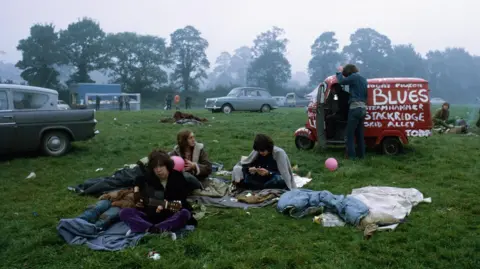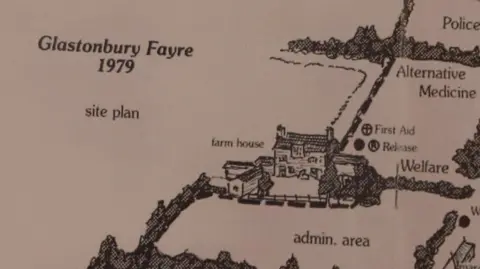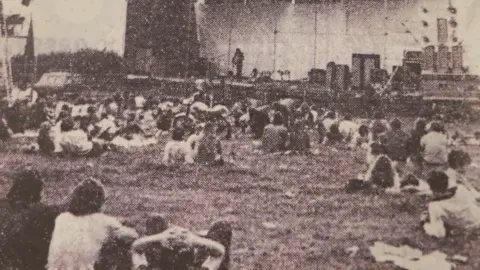'I loved anarchy of Glastonbury Festival in 1970s'
 Getty Images
Getty ImagesAn archivist said she "loved the anarchy" of Glastonbury Festival when it first started and people could just "wander in".
Maureen Tofts, who grew up in Pilton, said the event was 'amazingly small' in the 1970s but quickly grew in size. By the 1980s, villagers had to stock up on food at home because no-one could drive out of the area during the festival due to cars being parked everywhere.
Ms Tofts is from the Pilton History Group, which showcases photographs and maps from the 70s and 80s, when the site ended "just beyond the Pyramid Stage".
"When we first came it was pretty anarchic, there weren't that many rules. I loved it, I loved the anarchy," she added.

She said the festival is now very well organised and loved by people across the world.
During the 1970s, there was no fence and people "just wandered in" and enjoyed the free milk, she said.
"People used to walk to the site in as close as a straight line as they could towards the music. This included through our land," Ms Tofts added.
"Probably why we found one man fast asleep outside our greenhouse. It was scorching hot and he had one side of his face imprinted with the pattern of concrete paving slabs with sun burn on the other side of his face.
"We woke him up, gave him a bottle of water and sent him on in the right direction."
She added that by 1984, the festival was "much bigger".
"We have that map which is quite amusing, it has a legend on one side which gives you the icon of the telephone and there was only one on the site.
"I remember people queuing yards and yards to try and use the phone," Ms Tofts added.

She added that those living in the village would have to stock up on food beforehand, as they would not be able to drive out of the village during the festival, which lasted between four or five days.
"You would have done a very large shop, you'd stock up because you knew the chances were you wouldn't get out of the village for a few days. But that wasn't a problem, just what it was," she said.
During "unrest" when organisers were trying to clear the site after one festival, police vans were stationed outside her home.
"[Police] had mesh over their front van windows lined up near our house. All such a contrast to today's organisation," she added.

The event has changed a lot from the days she would have to arrange a meeting point with friends, which used to be by an ice cream van near an oak tree.
"Nowadays, my grandsons have an app on their mobile phones and they can see where people are on the site. They manage to miraculously meet each other," she added.
There is less than a week to go until Worthy Farm's gates are opened for this year's festival. Headliners include The 1975, Neil Young and Olivia Rodrigo.
Follow BBC Somerset on Facebook and X. Send your story ideas to us on email or via WhatsApp on 0800 313 4630.
